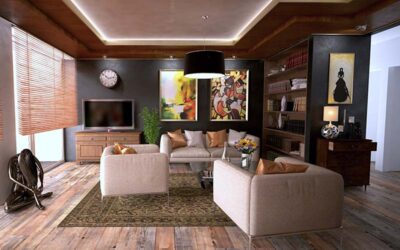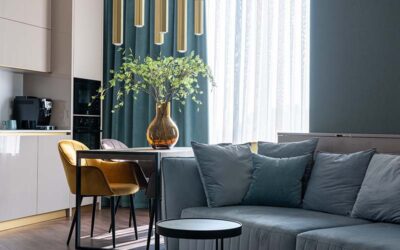Open Concept Layouts
Pros:
- Increased Natural Light: Open concept layouts often feature larger windows that allow natural light to flow freely throughout the space. This creates a bright and airy atmosphere.
- Enhanced Social Interaction: Open layouts promote social interaction by eliminating physical barriers between the kitchen, dining, and living areas. This design is ideal for entertaining and spending time with family and guests.
- Versatile Space: Open concept spaces offer flexibility in furniture arrangement and room usage. You can easily adapt the layout to accommodate various activities, from cooking to working or lounging.
- Modern Aesthetics: Open concept designs are popular in modern and contemporary homes, providing a sleek and seamless look that’s favored by many.
Cons:
- Limited Privacy: The lack of walls and doors can mean less privacy, making it challenging to create separate zones for focused work, study, or relaxation.
- Noise Concerns: With sound traveling freely, noise from one area of the open space can disrupt activities in another. This can be a drawback in homes with active families or shared living spaces.
- Cooking Odors and Noise: In open kitchens, cooking odors and noise can permeate the entire living area, which may not be desirable for some homeowners.
- Clutter Visibility: An open concept layout means that clutter and mess in one area are visible from other parts of the space. This may require extra effort to maintain tidiness.
Traditional Layouts
Pros:
- Clearly Defined Spaces: Traditional layouts provide distinct rooms with designated purposes, offering privacy and clear separation between different activities.
- Reduced Noise: Walls and doors in traditional layouts help contain noise, making it easier to maintain quiet spaces for work, relaxation, or sleep.
- Decorative Opportunities: Walls offer opportunities for decorative elements such as artwork, wallpaper, and built-in shelving, enhancing the overall aesthetics of each room.
- More Storage: Traditional layouts often include built-in storage options like closets and cabinets, which can help keep belongings organized and out of sight.
Cons:
- Less Natural Light: Traditional layouts with separate rooms may have smaller windows, resulting in less natural light and a potentially darker atmosphere.
- Limited Social Interaction: Walls can hinder social interaction and communication between family members or guests when compared to open concept designs.
- Formal Feel: Traditional layouts can sometimes feel more formal and closed off, which may not align with the preferences of those seeking a more casual and open living environment.
- Space Constraints: Separate rooms can lead to a less spacious feel, making homes with traditional layouts seem smaller, especially in older or smaller houses.
Conclusion: A Matter of Preference
The choice between open concept and traditional layouts ultimately comes down to your lifestyle, preferences, and the functionality you desire in your living space. Consider how you use your home, your design aesthetic, and your privacy needs when making this important decision. Some homeowners even opt for a compromise, combining elements of both styles to create a space that meets their unique requirements. Ultimately, the layout should reflect your personal taste and enhance your overall quality of life in your home.




0 Comments